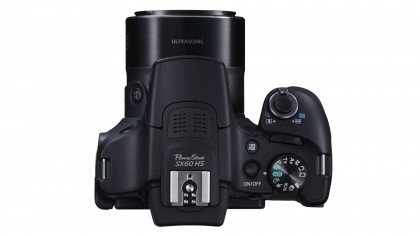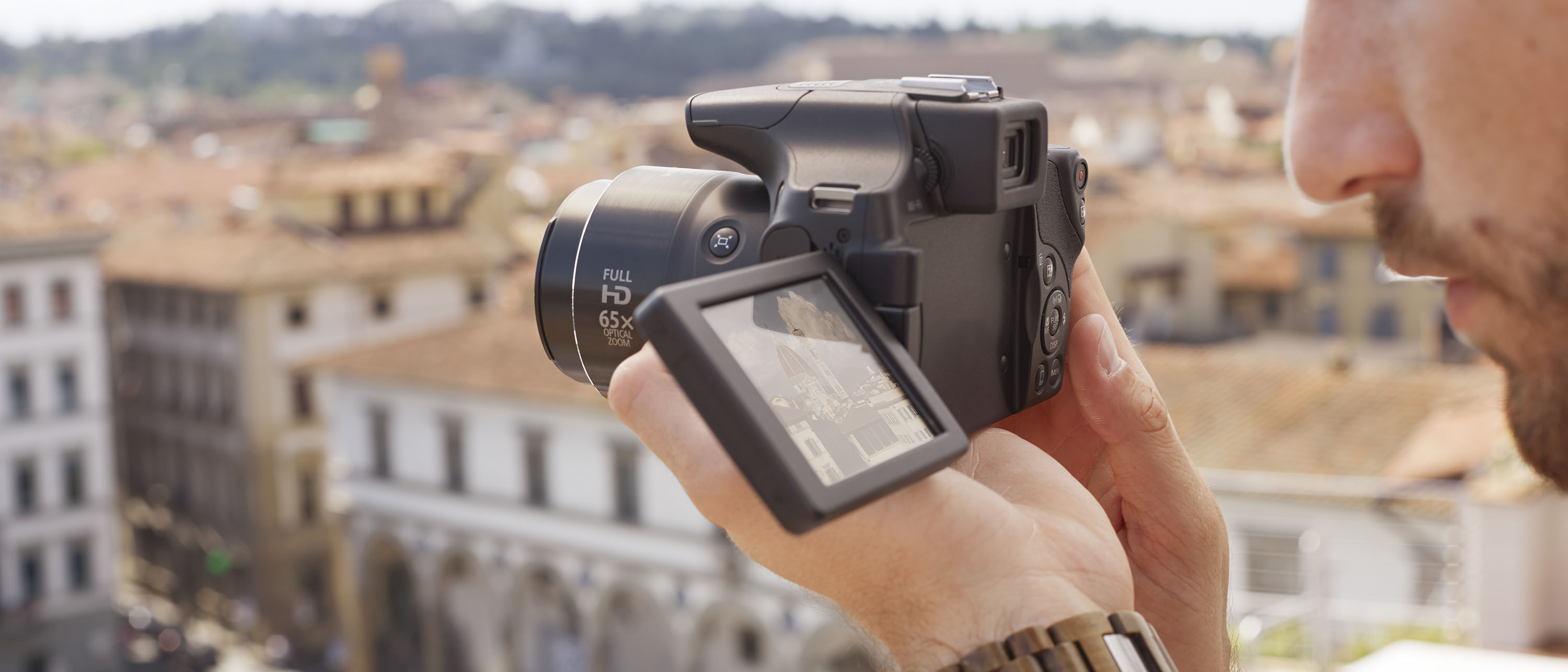Why you can trust TechRadar
Build and handling
- Manual, semi-auto and auto modes
- Easy to use controls
- Weighs 650g
The SX60 HS is one of the largest bridge cameras on the market, and you'd be forgiven for thinking at first glance that it was in fact a DSLR, especially one of the smaller entry-level models.
There's a deep grip which makes the SX60 sit very comfortably in the hand, while it is also textured to give it that extra feel of quality. The grip has a slight contour for your middle finger which makes it feel even more secure in the hand.

Enthusiasts are likely to appreciate the number of direct buttons and dials which are found on the body of the camera. On top of the camera, there's a mode dial which allows you to switch between different exposure modes – there are automatic and scene modes to choose from, as well as semi-automatic and manual modes (M/Av/Tv/P). There's also a video mode accessible directly from this dial, although you can also use a dedicated video button on the back of the camera too when using different modes.

Also on top of the camera is a zoom switch for extending the SX60's 65x optical zoom lens. You'll find this just around the shutter release button, and it's fairly smooth and fluid to use, enabling you to quickly reach the far end of the zoom quickly. When you have digital zoom switched on (and you're not shooting in raw), keep the zoom switch held down to enter the digital territory – it will pause slightly before entering first the Zoom Plus and then again before entering the standard zoom.
Just in front of the mode dial is a scrolling dial which is easily reached by the forefinger and serves a number of different functions depending on the shooting mode you're in. For instance, if you're in aperture priority mode, it will alter aperture, while in shutter priority it will alter shutter speed.
Finally, on the top of the camera is a dedicated "shortcut" button which can be customised to one of 18 different functions, including switching raw and jpeg on and off, directly accessing white balance and timer mode.
Head to the back of the camera and you'll find a familiar layout if you've used any Canon cameras before. There's a standard four way navigational pad, with each of the directional keys serving a specific function – press left, for example, to access focusing mode (macro, infinity and manual are available), while pressing right accesses flash options. It would be nice if you could have customised these keys in the main menu.
Sign up for breaking news, reviews, opinion, top tech deals, and more.

In the centre of the navigation pad is a function button which gives you access to a sort of quick menu for the most commonly used settings available, such as ISO (sensitivity), white balance, aspect ratio and so on.
Just above the navigation pad is a dedicated button for altering exposure compensation. When in manual mode, you can press this button to switch between aperture and shutter speed. You can only access exposure compensation when shooting in aperture priority or shutter priority.
Also useful is a button on the back of the camera for changing the autofocus point. It has the same icon as the buttons you find on Canon DSLRs for the same purpose – simply press it and then use the navigational keys to scroll around to the point you wish to focus on.
The Zoom Frame Assist button is extremely handy when photographing at the far end of the zoom range. This button can be found on the side of the lens barrel. If you lose track of a subject, simply hold it down and the lens will zoom back out again allowing you to find the subject again – release the button and the lens will zoom to that point.
Raw format shooting can be activated from within the quick menu, which places some restrictions on what you can and can't shoot . For instance, you'll no longer be able to alter the colours using MyColors, or use digital zoom, which seems a bit of a shame.

The screen is a fully articulating device which is very handy when photographing something from an awkward angle, and is much more useful than merely a tilting screen. In order to activate the electronic viewfinder, you need to press the down key (display) on the navigational pad – and you'll need to press it twice when you want to switch back to the screen. This is a fairly frustrating way to work, and it would have been fantastic to see an eye sensor on the SX60 HS to make it a more seamless transition between using the two.
Autofocus
- Single, Continuous, Servo AF/AE, Tracking AF
- Face Detection
- 0cm minimum focus distance
Focusing is quick and generally reliable when in good light, locking onto the subject with accuracy. Unlike some of the other cameras in Canon's range, you can alter the AF point which gives you greater flexibility when framing. As the light drops, the camera struggles a little more with focusing, but generally speaking it's not too bad.
Current page: Build, handling and AF
Prev Page Introduction and key features Next Page Performance and image quality
Amy has been writing about cameras, photography and associated tech since 2009. Amy was once part of the photography testing team for Future Publishing working across TechRadar, Digital Camera, PhotoPlus, N Photo and Photography Week. For her photography, she has won awards and has been exhibited. She often partakes in unusual projects - including one intense year where she used a different camera every single day. Amy is currently the Features Editor at Amateur Photographer magazine, and in her increasingly little spare time works across a number of high-profile publications including Wired, Stuff, Digital Camera World, Expert Reviews, and just a little off-tangent, PetsRadar.
